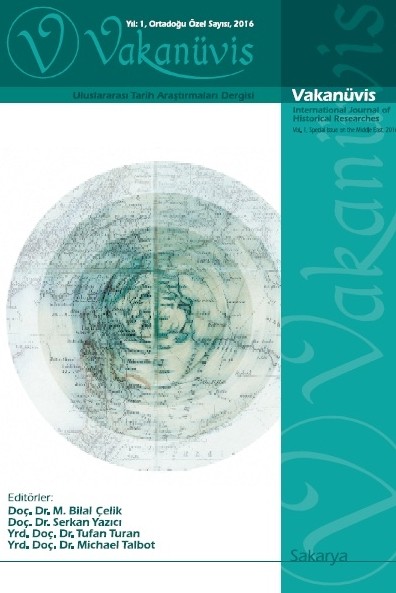Hocalı Katliamının Tarihsel Arka Planı ve Katliamın Türk Ve Batı Basınına Yansımaları
Azerbaycan’ın Dağlık Karabağ bölgesinde yer alan Hocalı, Erivan yönetiminin Dağlık Karabağ’a hâkim olma ve bunun akabinde “Büyük Ermenistan’ı” kurma gibi emperyalist bir politikayı hayata geçirme arzusu sonucu 25 Şubat 1992 gecesi Ermeni silahlı güçleri tarafından saldırıya uğramıştır. Hankendi’nde bulunan eski Sovyet Ordusu’na ait 366. Motorize Alayı’nın da destek verdiği bu saldırı esnasında resmî rakamlara göre 106’sı kadın, 63’ü çocuk, 70’i yaşlı toplam 613 kişi katledilmiş; 76’sı çocuk 487 kişi ağır yaralanmış ve 1.275 kişi esir alınmıştır. 150 kişiden de bir daha haber alınamamıştır. Gayriresmî rakamlara göre ise katledilenlerin sayısı 1.300, yaralı sayısı 1.000’in üzerindedir. Ermenistan’ın Hocalı’da gerçekleştirdiği katliam insanlık aleyhine işlenen bir cinayet olarak tarihteki yerini alırken, bu vahşet Türk ve Batı basınında da yankı uyandırmıştır.
Çalışmanın amacı, Ermenilerin Hocalı’ya saldırmasının nedenini, saldırı esnasında yaptıkları katliamı ve bu katliam dolayısıyla Hocalı halkının başından geçen trajik hadiseleri aktarmak ve Hocalı Katliamının Türk ve Batı basınına yansımalarını ortaya koyarak literatüre katkı sağlamaktır. Çalışmada, bahsi geçen süreç, konuyla alakalı çalışmalar, yerli ve yabancı süreli yayınlar ışığında irdelenmiştir.
Anahtar Kelimeler:
Azerbaycan, Ermenistan, Hocalı Katliamı, Dış Politika, Basın
The Process Leading to the Khojaly Massacre and its Reflections in the Turkish and Foreign Press
Khojaly, located in the Nagorno-Karabakh region of Azerbaijan, was attacked by the Armenian armed forces on the night of February 25, 1992, as a result of the Yerevan administration's desire to dominate Nagorno-Karabakh and subsequently implement an imperialist policy such as the establishment of "Great Armenia". During this attack, which was supported by the 366th Motorized Regiment of the former Soviet Army in Khankendi, according to official figures, a total of 613 people were killed, including 106 women, 63 children, and 70 elderly people; 487 people, 76 of them children, were seriously injured and 1,275 people were taken prisoner. 150 people have not been heard from again. According to unofficial figures, the number of massacres is 1,300 and the number of casualties is over 1,000. While Armenia's massacre in Khojaly has taken its place in history as a murder committed against humanity, this atrocity has had repercussions in the national and foreign press.
The study aims to contribute to the literature by presenting the reason for the Armenians' attack on Khojaly, the massacre they committed during the attack, and the tragic events that the people of Khojaly went through due to this massacre, and to reveal the reflections of the Khojaly Massacre on the Turkish and Western press. In this study, the mentioned process has been examined in the light of relevant studies, and domestic and foreign periodicals.
Keywords:
Azerbaijan, Armenia, Khojaly Massacre, Foreign Policy, Press,
___
- Cumhuriyet, Hürriyet İzvestiya Milliyet Moskovskiye Novosti New York Times
- ISSN: 2149-9535
- Başlangıç: 2016
- Yayıncı: Serkan YAZICI
Sayıdaki Diğer Makaleler
Risâle-i Merâsim-i Bektaşi Adlı Esere Göre Bektaşi Nasıl İkrar Verir?
Anadolu’da Bir Çepni Merkezi: 13-16. Yüzyıllarda Sinop ve Çevresinde Çepniler
Necip Ali (Küçüka) Bey’in Hakikat Gazetesindeki Yazıları
Mustafa Kemal Paşa ve Milli Mücadele Liderleri Ekseninde Halifeliğin Kaldırılması Tartışmaları
MİRZA MUHAMMED HÜSEYİN FERAHANİ İLE 1885 YAZINDA TAHRAN’DAN İSTANBUL’A SEYAHAT
Murat HANİLÇE, Mikail DEVEBAKAN
Türkiye’nin İlk Kadın Avukatı Süreyya Ağaoğlu’nun Kadın Ve Çocuklarla İlgili Faaliyetleri
Birinci Dünya Harbi Sina-Filistin Cephesi’nde Alman Havacılarının Faaliyetleri
18. Yüzyıl Tarihî Metinlerinin Konuşma Dili Dikkate Alınarak Transkripsiyonu Üzerine Bazı Tespitler
